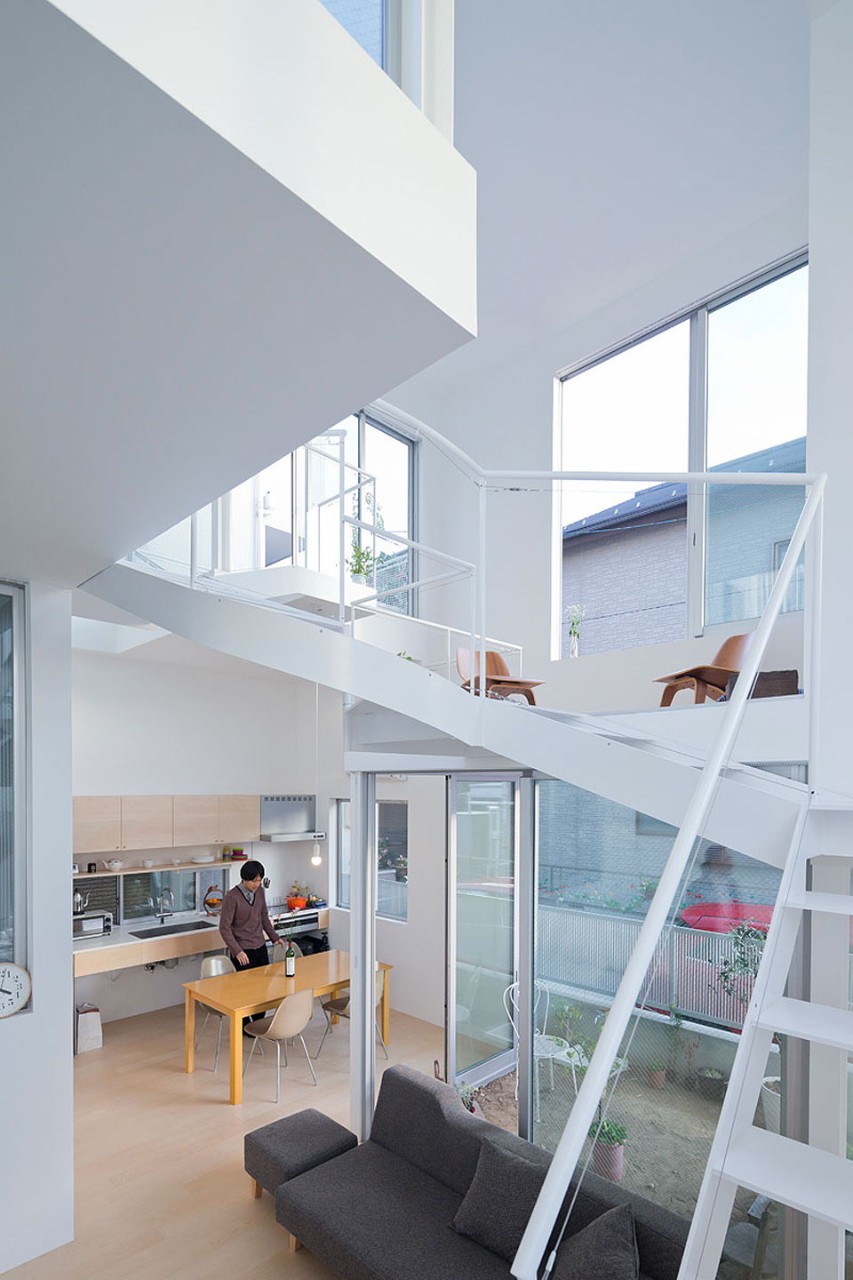
The result is a structure with no ordered or linear development, originating from the idea to incorporate different components in a more organic way. “When you build a home for a young family with growing children, you have to consider the fact that the spaces will change quickly. So it is important to conceive an open layout, based on an equilibrium that holds the different elements together,” continues Kondo. The form of the building revolves around a single room and draws inspiration from a series of differently shaped boxes that represent the other rooms.
“I also tried to deal simultaneously with elements that would normally not be related—such as depth, height, structure, light, functions, form, circulation and the external space of the terrace. I think that by mixing different aspects like the present and future course of life, the history and cultural background of the area where one finds oneself, this kind of architecture can offer a new level of housing comfort. It’s about maintaining a certain state of equilibrium. Order does not have to be restrictive but rather limit itself to defining the relationships. I set out to conceive an architecture that is supported on a softer order.”




